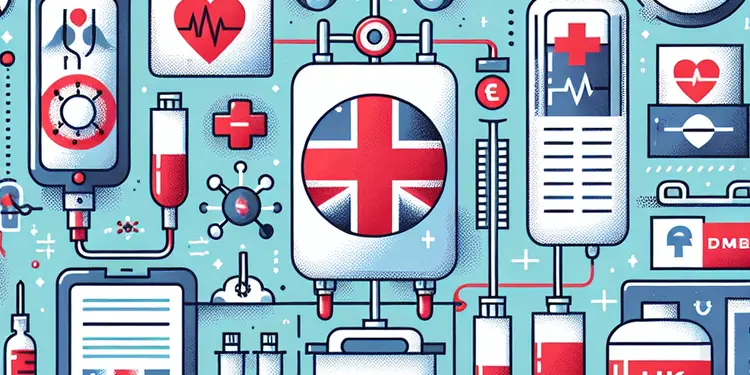
Find Help
More Items From Ergsy search
-
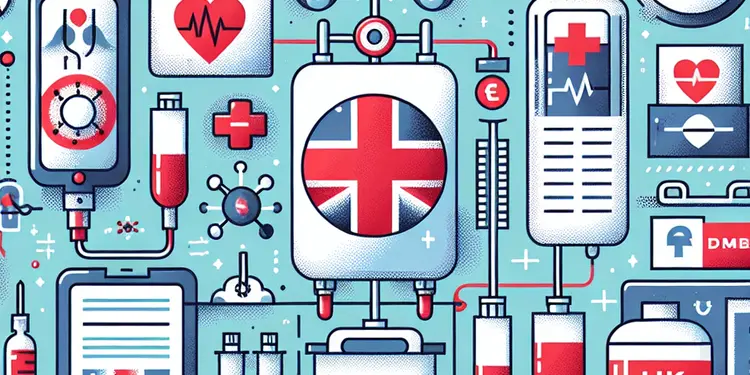
What measures are taken to prevent disease transmission in blood transfusions?
Relevance: 100%
-
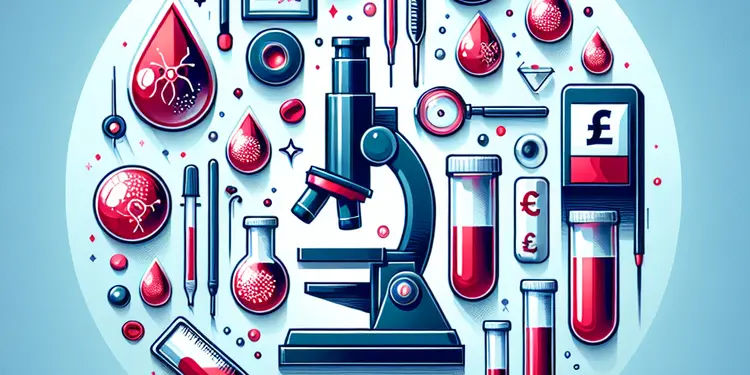
How is blood screened to prevent disease transmission?
Relevance: 80%
-

What diseases can be spread by blood transfusions?
Relevance: 76%
-
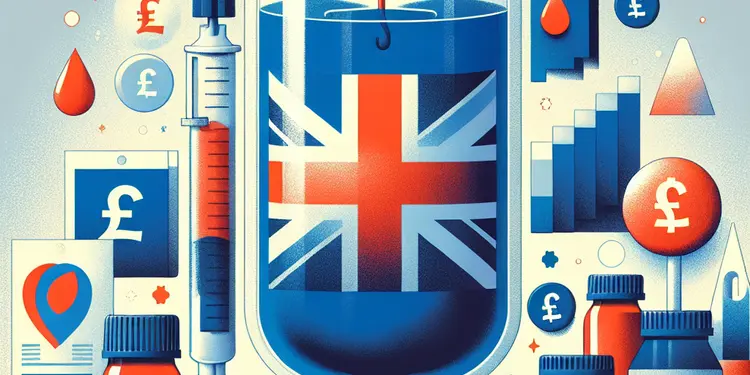
Is Chagas disease a concern with blood transfusions?
Relevance: 75%
-
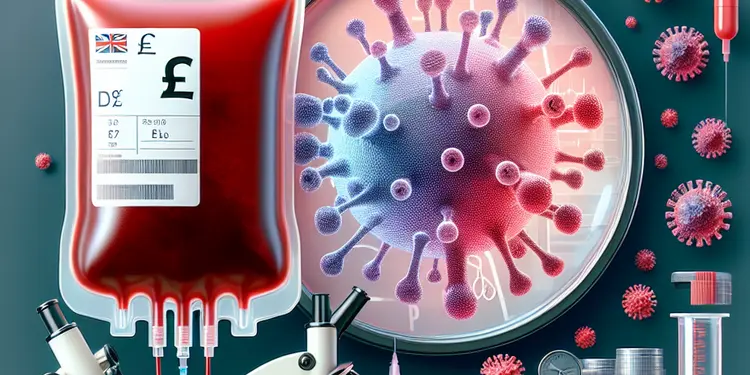
What is the most common disease transmitted by blood transfusion?
Relevance: 73%
-
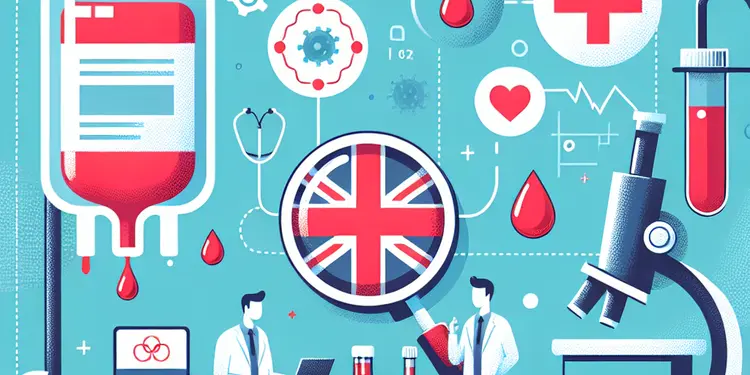
Can you get any prion diseases from blood transfusion?
Relevance: 68%
-
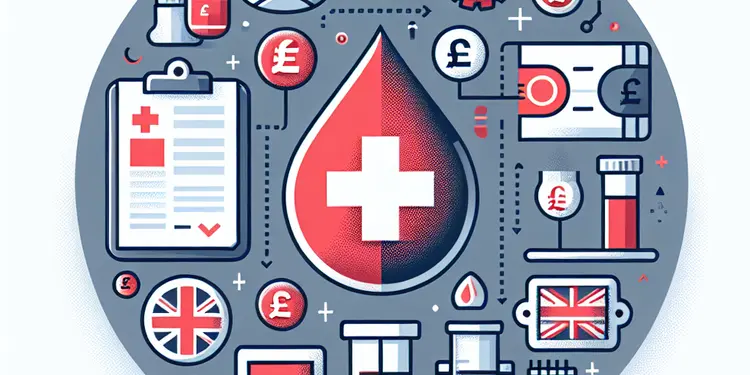
Why is blood donation history important in preventing disease transmission?
Relevance: 66%
-
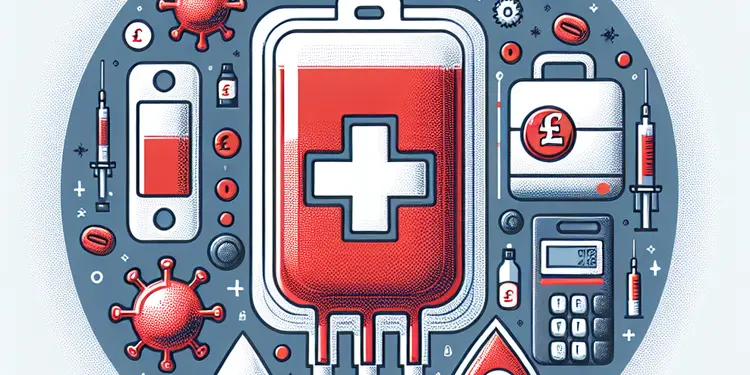
Is HTLV a risk in blood transfusions?
Relevance: 64%
-

Are there any parasites that can be transmitted through blood transfusions?
Relevance: 64%
-
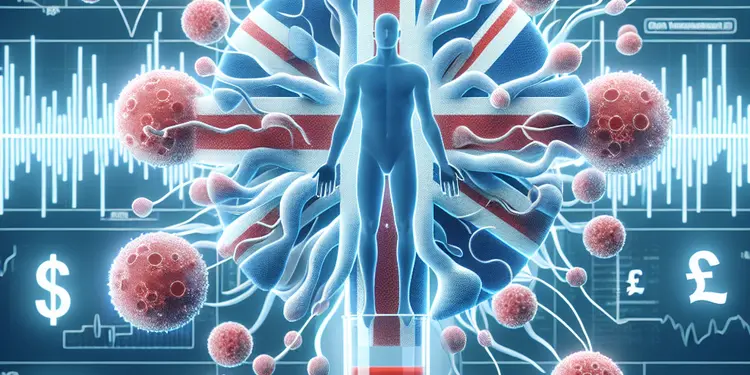
Can syphilis be transmitted via blood transfusion?
Relevance: 63%
-

Is malaria still a concern for blood transfusion safety?
Relevance: 63%
-
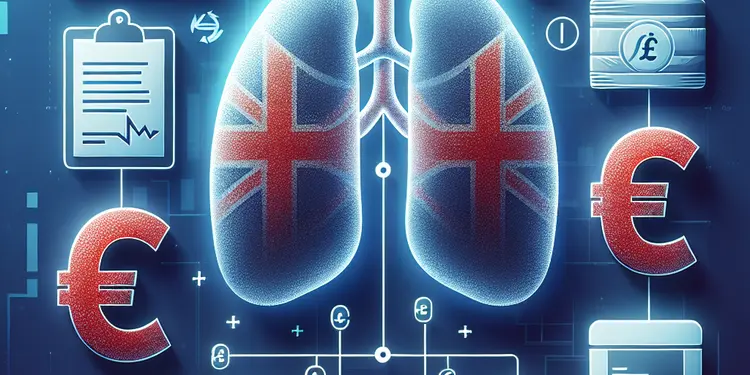
Is Hepatitis B a risk in blood transfusions?
Relevance: 62%
-
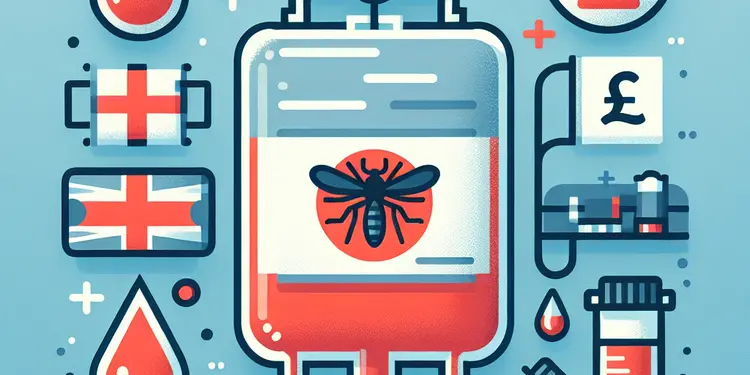
Can Dengue fever be transmitted through blood transfusions?
Relevance: 61%
-
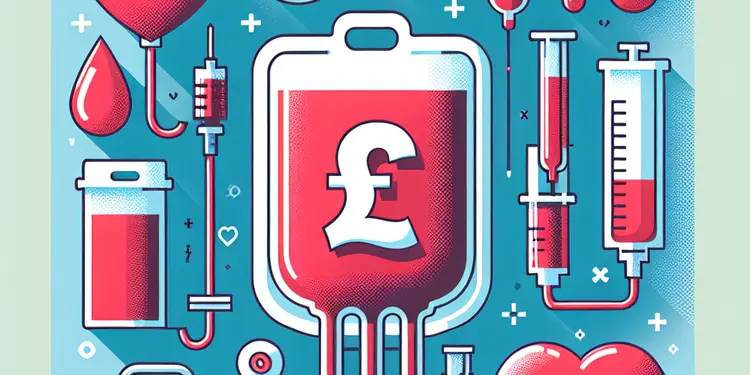
Can HIV be transmitted through blood transfusions?
Relevance: 58%
-
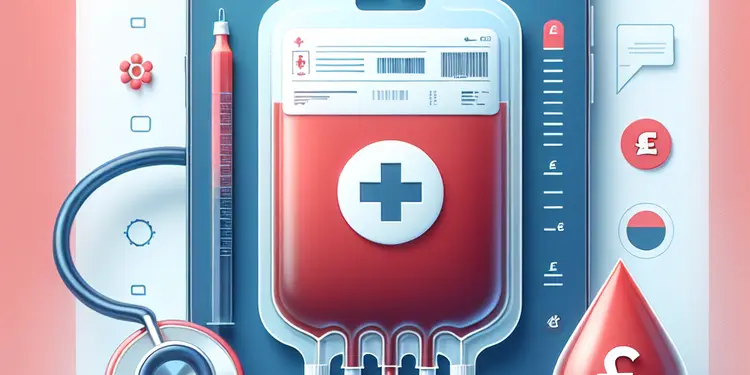
Can bacterial infections be transmitted through blood transfusion?
Relevance: 56%
-
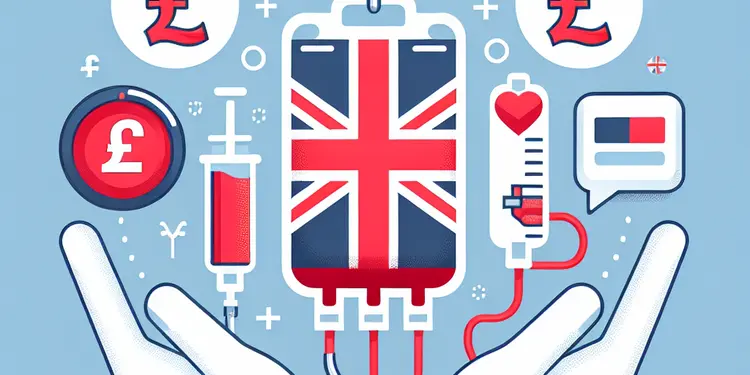
Can COVID-19 be transmitted through blood transfusions?
Relevance: 56%
-
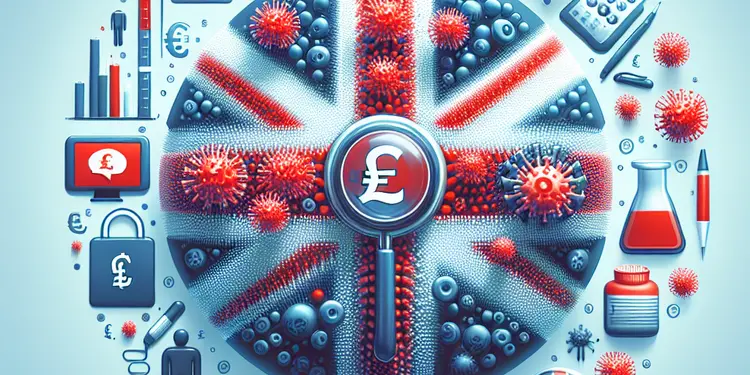
Is Zika virus screened for in blood transfusions?
Relevance: 56%
-
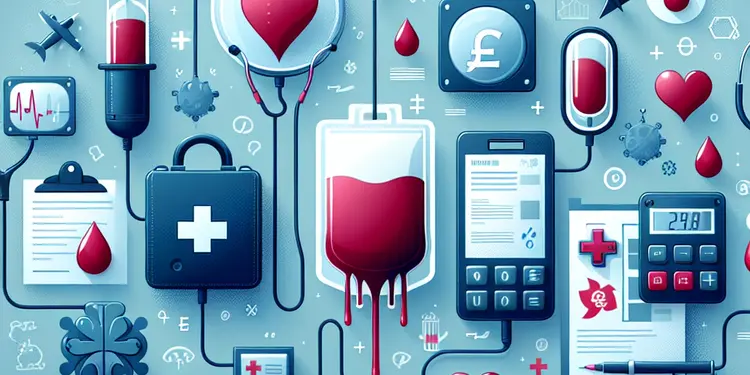
Can certain medical conditions prevent receiving blood transfusions?
Relevance: 56%
-
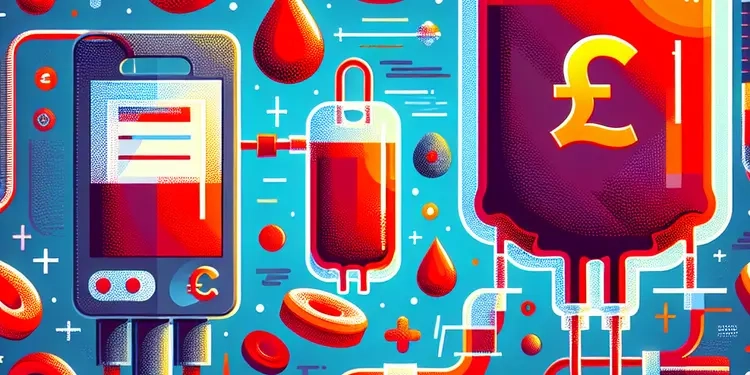
What is a blood transfusion?
Relevance: 55%
-

Blood Product Transfusions
Relevance: 53%
-
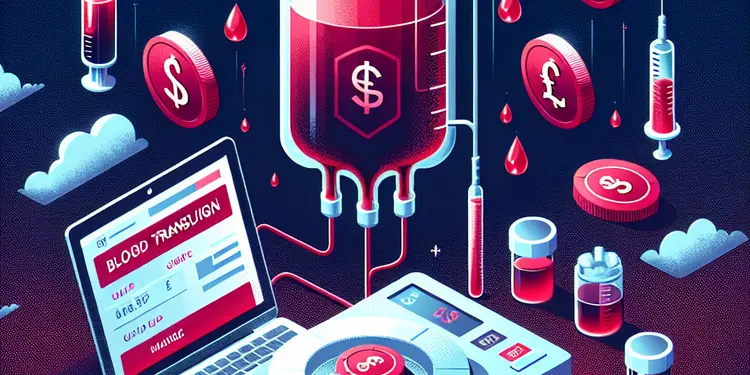
Why might someone need a blood transfusion?
Relevance: 52%
-
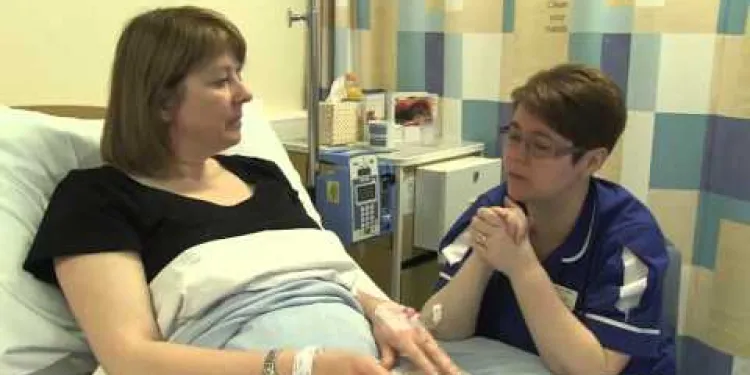
Blood Transfusion
Relevance: 52%
-
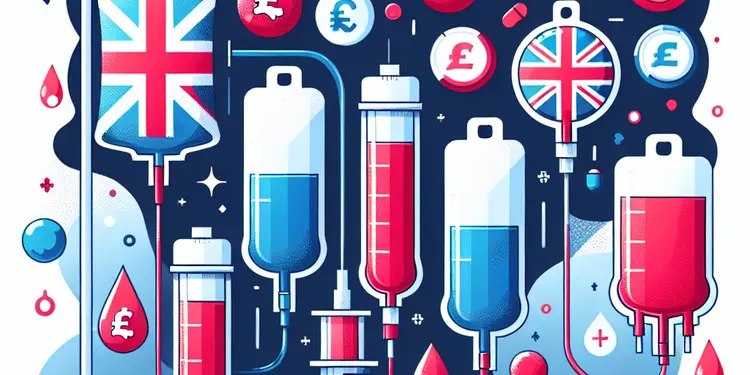
What types of blood products can be transfused?
Relevance: 50%
-
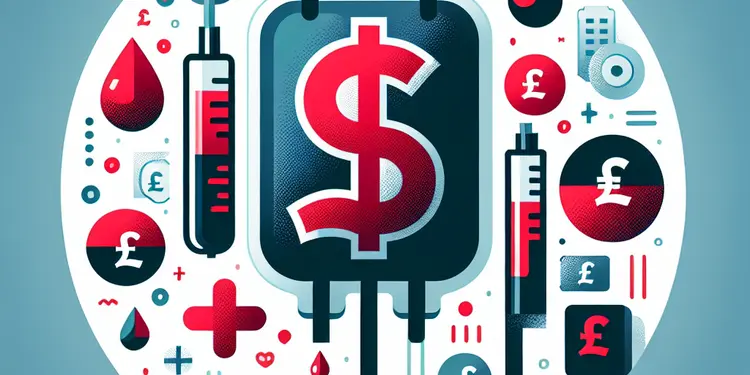
What are some common reasons blood transfusions are needed?
Relevance: 50%
-

Are there risks associated with blood transfusions?
Relevance: 49%
-
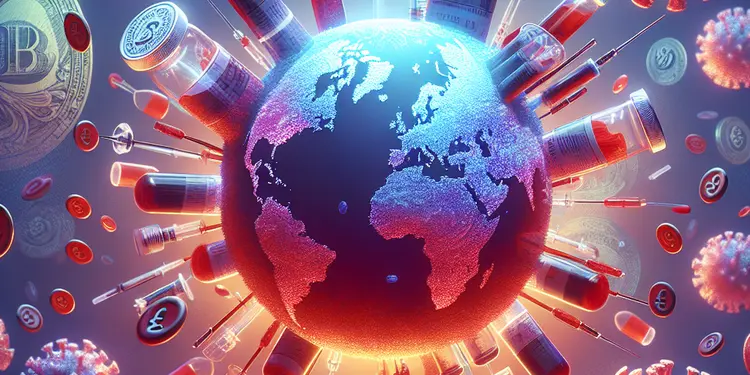
Can cytomegalovirus (CMV) be spread through transfusions?
Relevance: 49%
-
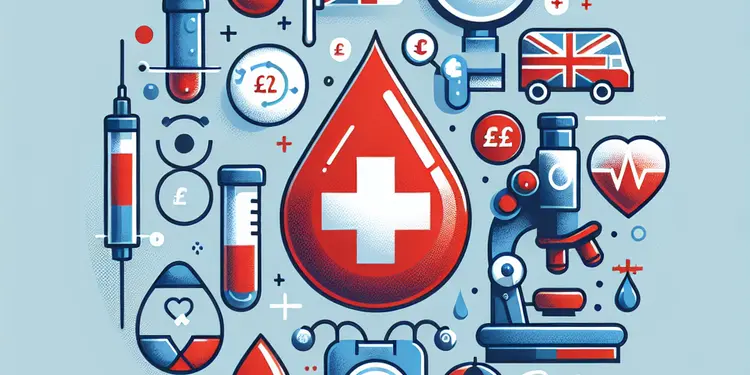
How do healthcare providers match blood for transfusions?
Relevance: 47%
-
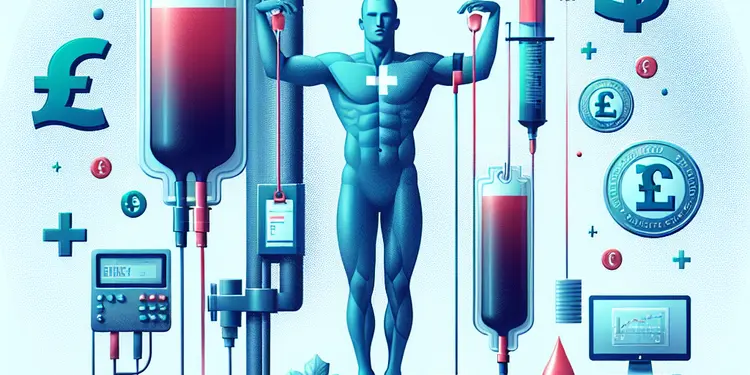
Can someone have a reaction to a mismatched blood transfusion?
Relevance: 47%
-
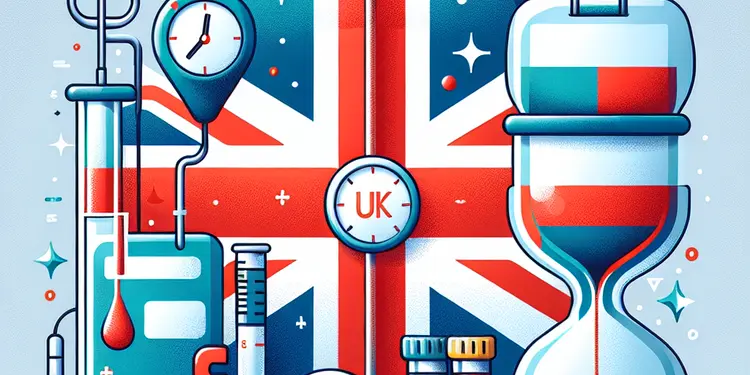
Is there an age limit for receiving blood transfusions?
Relevance: 46%
-
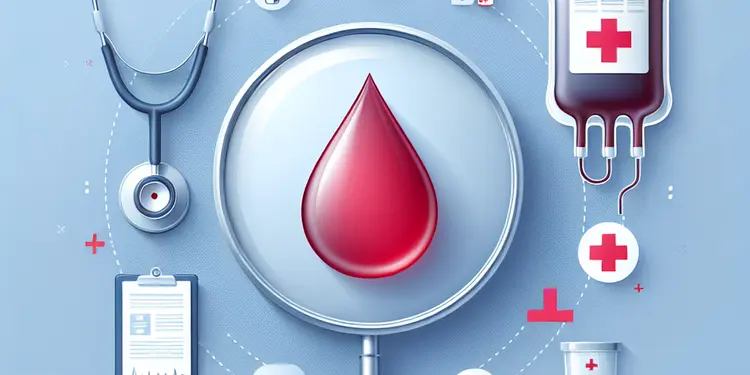
How do doctors determine how much blood is needed for a transfusion?
Relevance: 45%
-
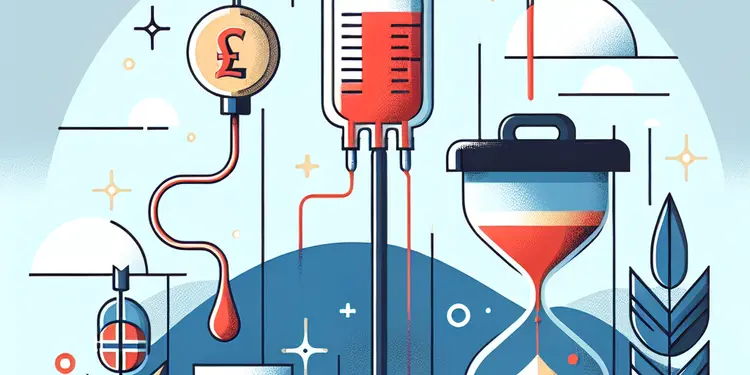
How long does a blood transfusion take?
Relevance: 44%
-
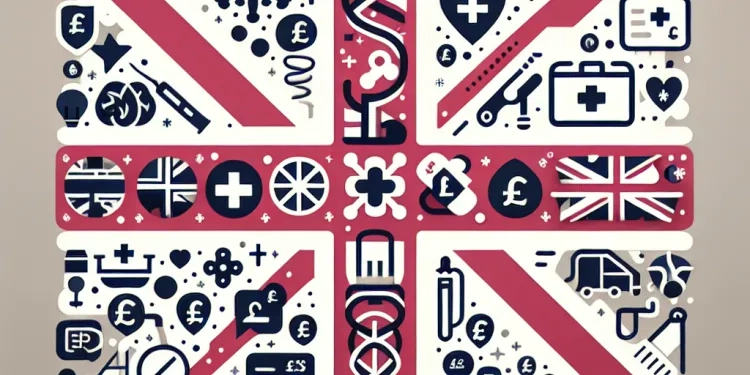
Can Marburg virus disease be prevented?
Relevance: 44%
-
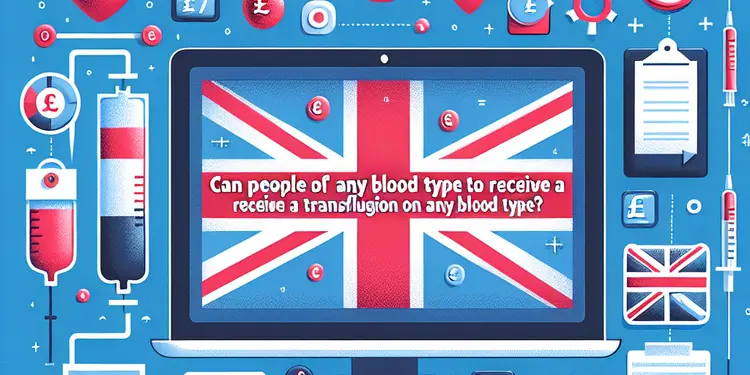
Can people of any blood type receive a transfusion of any blood type?
Relevance: 43%
-

Seven Reaasons For Measuring blood pressure
Relevance: 41%
-
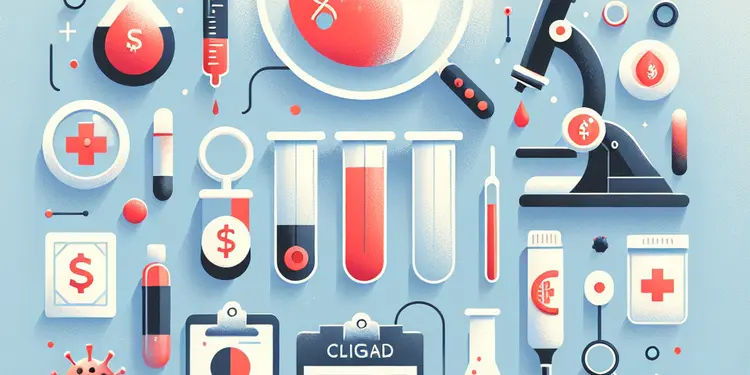
What other viruses are tested for in blood donations?
Relevance: 41%
-
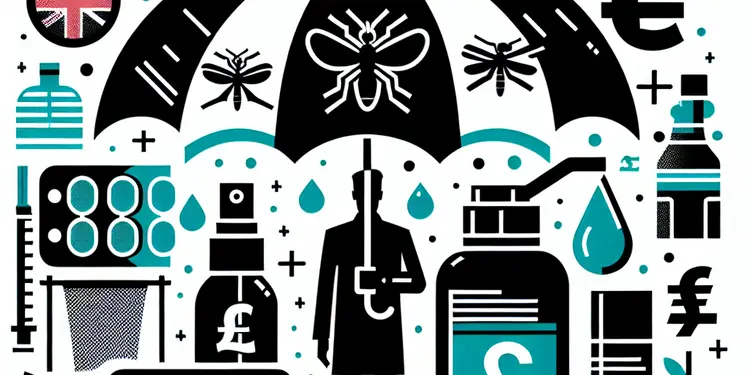
What measures are being taken to prevent mosquito-borne diseases in the UK?
Relevance: 40%
-
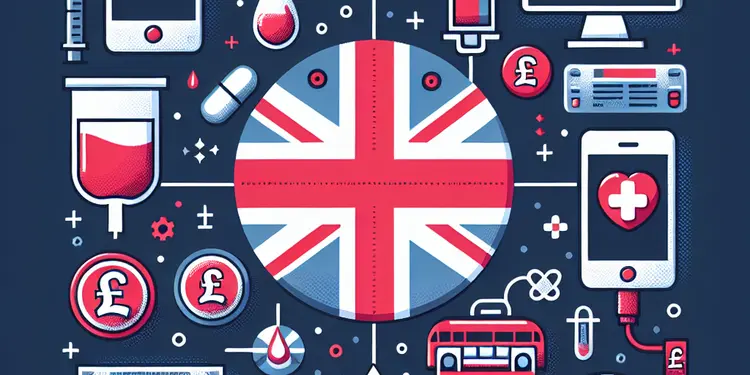
Is blood used for transfusions safe?
Relevance: 39%
-

How is Lyme disease transmitted?
Relevance: 38%
-

What is plasma, and why might it be transfused?
Relevance: 38%
-

Are new variants more transmissible?
Relevance: 37%
Introduction to Blood Transfusion Safety
Blood transfusion is a crucial medical procedure that saves numerous lives annually. However, ensuring the safety and integrity of blood transfusions is paramount to prevent the transmission of infectious diseases. The UK has adopted a comprehensive and rigorous set of measures to uphold this safety.
Donor Screening and Selection
The first step in preventing disease transmission through blood transfusions is meticulous donor screening. Potential donors are required to complete an extensive health questionnaire addressing any potential risk factors, including travel history, lifestyle behaviors, and medical history. This screening helps identify individuals who may carry infectious pathogens, thereby preventing them from donating blood.
Mandatory Blood Testing
Every unit of donated blood undergoes mandatory testing for a range of infectious agents before it is deemed safe for transfusion. In the UK, blood donations are tested for HIV, hepatitis B, hepatitis C, syphilis, and other emerging infectious threats. These tests employ sensitive and advanced methodologies such as nucleic acid testing (NAT), ensuring early detection of viral genetic material even at low levels, greatly reducing the risk of transmission.
Pathogen Inactivation Technologies
Recent advances have introduced pathogen inactivation technologies which add an extra layer of safety for certain blood products. These methods aim to eliminate any existing pathogens in blood components, particularly in donated platelets and plasma, by using photochemical treatments and other techniques. Although not yet universally applied to all blood products, such technologies represent significant progress in transfusion safety.
Donor Deferral Policies
In the UK, specific deferral policies are in place to mitigate the risk of disease transmission. Donors may be temporarily or permanently deferred based on their risk profile. For instance, individuals who have recently traveled to areas with ongoing infectious disease outbreaks or those who have had new tattoos or piercings may face temporary deferral periods.
Monitoring and Surveillance
The UK Health Security Agency continuously monitors and reviews data on transfusion-related infections, facilitating a responsive and adaptive approach to emerging threats. This surveillance ensures timely updates to policies and testing methodologies are executed, maintaining the highest safety standards.
Conclusion
The UK employs a multi-faceted strategy to prevent disease transmission in blood transfusions, encompassing donor screening, stringent testing, pathogen inactivation, and ongoing surveillance. These measures collectively ensure that blood transfusions remain a safe procedure, drastically minimizing the risk of transmitting infections while saving lives.
Introduction to Blood Transfusion Safety
Blood transfusion is when you give blood to someone else to help them get better. It helps save a lot of lives each year. But it is very important to make sure that the blood is safe. This stops the spread of diseases. In the UK, they have many rules to keep this process safe.
Donor Screening and Selection
The first step to keeping blood safe is checking the donors. People who want to give blood have to answer a lot of questions about their health. They tell about where they have traveled, how they live, and their medical history. This helps find people who might have infections, so they don’t give blood.
Mandatory Blood Testing
All donated blood is tested for diseases before it is used. In the UK, they check for viruses like HIV, hepatitis B, hepatitis C, and others. They use special tests to find even tiny amounts of these viruses. This helps make sure the blood is safe.
Pathogen Inactivation Technologies
There are new ways to make blood even safer. These methods can kill germs in parts of the blood like platelets and plasma. They use special lights and other techniques. Though not used for all blood yet, these methods help keep blood transfusions safe.
Donor Deferral Policies
In the UK, there are rules about who can give blood. Some people might not be able to donate for a while or at all. For example, people who just traveled to places with disease outbreaks or just got a tattoo might have to wait.
Monitoring and Surveillance
The UK Health Security Agency keeps an eye on infections related to blood transfusions. This helps them quickly change rules and testing methods if needed. This means they can keep the highest safety standards.
Conclusion
The UK uses many ways to make sure blood transfusions are safe. They check donors, test the blood, use new technologies, and watch for problems. All of this keeps blood transfusions safe and helps save lives without spreading infections.
Frequently Asked Questions
What is the main purpose of blood screening in transfusions?
The main purpose of blood screening is to detect and prevent the transmission of infectious diseases through donated blood.
What infections are blood donations commonly screened for?
Blood donations are commonly screened for HIV, Hepatitis B, Hepatitis C, syphilis, West Nile Virus, and other region-specific infections.
How does nucleic acid testing (NAT) help in blood safety?
Nucleic acid testing helps by detecting viral genetic material earlier in the infection stage, reducing the window period and the risk of disease transmission.
What role does donor selection play in preventing disease transmission?
Careful donor selection through medical history questionnaires and health assessments reduces the risk of collecting blood likely to be infected.
Are there guidelines for deferring certain donors?
Yes, there are guidelines for deferring donors who have traveled to regions with endemic diseases or engage in high-risk behaviors, temporarily or permanently.
Is blood testing mandatory for all donations?
Yes, all donated blood is tested for specific infectious diseases per regulatory standards before it is cleared for transfusion.
How is donor confidentiality maintained during the screening process?
Donor confidentiality is maintained by using anonymized barcodes and restricting access to test results to authorized personnel.
Can blood be treated to inactivate pathogens?
Yes, pathogen inactivation technologies exist and can treat plasma and platelets to render infectious agents inactive while preserving blood functionality.
What measures are taken to prevent bacterial contamination of blood?
Measures include rigorous sterilization of collection equipment, controlled storage temperatures, and testing for bacterial contamination, especially in platelets.
What is the role of regulatory agencies in blood safety?
Regulatory agencies provide guidelines for screening, testing, and handling blood and monitor compliance to ensure ongoing safety.
What happens if a donated blood sample tests positive for an infectious disease?
The blood is discarded, and the donor is notified and deferred from future donations; follow-up actions depend on agency regulations.
How does the blood supply system ensure quality control?
The system ensures quality control through standard operating procedures, regular audits, and staff training on best practices in handling blood.
Are donors informed of risks related to transfusion-transmissible infections?
Yes, donors are informed of the risks and screening procedures, and they must provide informed consent before donation.
Is there a safe period after which blood can be considered free of infectious agents?
Blood is considered safe to release only after mandatory testing shows no signs of infectious agents; pre-testing periods depend on the infection in question.
How is blood storage important in preventing disease transmission?
Proper blood storage with controlled temperature and handling conditions helps prevent contamination and maintains the integrity of test results.
Why is post-donation information reported by donors important?
Post-donation reports help update donor health status and flag potential risks that could have occurred during the window period not yet detected by tests.
Are there special measures during an outbreak or pandemic?
During outbreaks, additional travel deferrals, enhanced screening measures, and potential new pathogen-specific testing protocols are implemented.
How often is testing technology updated for blood safety?
Testing technology is continuously reviewed and updated as new infectious agents are identified and diagnostic technologies evolve.
What is the impact of false positives or negatives on blood safety?
False positives can lead to unnecessary donor deferrals, while false negatives can pose a serious risk, hence robust testing algorithms and confirmatory tests are critical.
What improvements are being developed for the safety of blood transfusions?
Improvements include advanced pathogen inactivation methods, use of artificial blood products, and further integration of molecular diagnostics.
Why do doctors check blood before giving it to someone else?
The main reason we check blood is to find any diseases. This helps stop the spread of sickness from donated blood.
If you find reading hard, tools like text-to-speech can help. You can also ask someone to read with you.
What do they check for when you give blood?
When you donate blood, doctors check it to make sure it's safe. They look for germs that can make people sick. Here are some of the things they check for:
- HIV - a virus that can make people very sick.
- Hepatitis B and C - these are germs that hurt the liver.
- Syphilis - another kind of germ that makes people sick.
Doctors check for other germs too. This helps keep everyone safe.
If you find reading hard, you can ask someone to help you. You can also use text-to-speech tools to read the words aloud.
When you give blood, it is checked for some germs. These germs include HIV, Hepatitis B, Hepatitis C, syphilis, West Nile Virus, and other germs that might be common in your area.
How does testing blood with nucleic acid make it safe?
Nucleic acid testing (NAT) checks blood for tiny germs.
These tests help keep blood safe by finding germs early.
Using simple tools, like pictures and videos, can help you learn more. Asking questions can also help.
Nucleic acid testing helps find viruses early. This means it can stop the spread of disease better.
Here are some ways to make reading easier:
- Break text into small chunks.
- Use simple words.
- Read out loud to understand better.
- Use a finger or a pen to follow along.
- Try using audiobooks or reading apps.
How does choosing the right donor help stop the spread of diseases?
We make sure to choose blood donors carefully. We ask them questions about their health and check if they are well. This helps to make sure the blood is not infected.
Are there rules for asking some people not to donate?
Sometimes people can't donate blood right away if they have traveled to places where certain diseases are common, or if they do certain things that might be risky. This rule might last for a while or for good.
Tip: It's okay to ask questions if you don't understand. You can also use tools like reading apps to help you read better.
Do you have to do a blood test when you give blood?
Yes, all donated blood is tested for sicknesses before it can be used to help someone.
How do we keep donor information private during checks?
We take steps to protect donor information. Here’s how:
- We use safe computer systems to store information.
- Only a few people can see donor details.
- We don’t share personal details without permission.
If you have questions, you can ask someone to help or use tools like a voice reader.
We keep donor information private by using special barcodes that hide names. Only the right people can see the test results.
Can blood be made safe from germs?
Blood might have tiny germs that can make people sick. Scientists can use special methods to make the blood safe. There are tools and techniques that help remove these germs, so the blood can be used safely.
If you need extra help reading, you can:
- Ask a teacher or friend to explain.
- Use pictures to understand better.
- Use simple apps that read text out loud.
Yes, there are ways to make blood safe. We can treat plasma and platelets to stop germs from causing sickness. This keeps the blood working properly.
How do we keep blood safe from germs?
We have some important steps to keep everything safe:
- We clean all the tools VERY well.
- We keep things at the right temperature.
- We check for germs, especially in platelets.
Here are some things that can help you understand better:
- Use a ruler or your finger to follow the words on the screen or paper.
- Try reading out loud to yourself to hear the words.
What do regulatory agencies do to keep blood safe?
Regulatory agencies are groups that make rules to keep blood safe. They tell us how to check, test, and take care of blood. They also make sure everyone follows these rules to keep our blood safe.
What if donated blood has a disease?
The blood is thrown away. The person who gave the blood is told about this and asked not to give blood again. What happens next depends on the rules of the organization.
Tip: You can use a dictionary to understand hard words or ask someone to help you. Reading apps can also make reading easier.
How does the blood supply system stay safe?
The blood supply system checks blood to keep it safe.
Here are some ways it does this:
- Experts test the blood for germs.
- They make sure the blood is the right type.
- The blood is stored in clean places.
Tools that can help:
- Pictures and videos can show how this works.
- Simple charts can help you see the steps.
The system makes sure everything is done the right way. It uses simple rules, checks up often, and teaches workers how to do a good job with blood.
Do donors know about infection risks from blood transfusions?
Yes, we tell donors about the risks and how we check things. They need to say it's okay before they give.
When is blood safe from germs?
Here is a simple way to understand when blood is safe from germs. If someone wants to know if blood is free from bad germs, they can use tests. These tests check if the blood is safe.
If you want to learn more, you can use some helpful tools:
- Ask a doctor or nurse about blood safety.
- Look for easy videos online about blood safety.
- Try using simple apps or websites that explain blood and germs.
We test blood to make sure it is safe. We check to see if there are any germs that can cause diseases. We only use the blood if the tests show it is safe.
We wait a little before testing, depending on what we are checking for.
If someone needs help understanding this, they can use pictures or ask someone to explain it in a simple way.
Why is keeping blood safe important for stopping sickness from spreading?
Keeping blood safe is very important. It helps stop sickness from spreading to other people. Doctors and nurses save blood in special bags. They keep the blood clean and safe. This way, when someone needs blood, they don't get sick from it.
Here are some ways to make sure blood is safe:
- Test the blood to check for germs.
- Store the blood in a cold place to keep it fresh.
- Use clean needles and tools to take and give blood.
Some helpful tools or ideas are:
- Use pictures to show how blood is stored safely.
- Ask questions if you don't understand. This helps you learn more!
Storing blood the right way is very important. We keep it at the right temperature and handle it carefully. This stops germs from getting in and keeps the test results correct.
Why is it important for people who give donations to share information afterwards?
It is important for people who give donations to tell what happened afterwards. This helps keep everyone safe and healthy.
When people share information, it helps doctors know if there are any problems. This way, doctors can make sure donations are safe for everyone.
Tools that can help:
- Pictures: Use pictures to show what you mean.
- Audio: Listen to information being read aloud.
- Simple Words: Use easy words and short sentences.
After you give blood, reports help us check how you're feeling. They make sure you're healthy and catch anything that tests might miss because it's too early.
What happens during a big sickness spread?
When there is a disease outbreak, there are extra checks in place. Travel may be delayed. There are more health checks to make sure people are not sick. New tests might be used to find the sickness.
How often is new technology used to test blood?
Doctors and scientists check blood with new tools. They change these tools to keep blood safe.
This happens a lot to make sure the blood people use is good and healthy.
Try using pictures or videos to understand more. Ask someone if you have questions.
People keep checking and improving testing technology. This happens because new germs are found and testing tools get better.
How do wrong test results affect blood safety?
Sometimes, tests can say something is wrong when it isn't. This is called a "false positive." It means someone might not be able to help, even though they really can.
Other times, tests might miss a problem. This is called a "false negative." This can be dangerous because it means a problem goes unnoticed.
That's why it's super important to have strong tests and double-check if needed. This helps keep everyone safe.
What new ideas are helping make blood transfusions safer?
Doctors and scientists are working on new ways to make blood transfusions safer. Here are some ideas they are using:
1. **Testing Blood:** They test blood very carefully to make sure it is clean and safe.
2. **Better Storage:** They are finding better ways to store blood so it stays good for a longer time.
3. **Matching Blood Types:** They check to make sure a person's blood type is the same as the blood they get. This helps to prevent problems.
If reading is hard, you can ask someone to read this with you or use a tool that reads aloud. It can help you understand better.
Things are getting better with how we deal with blood. Here are some ways:
1. We have cool ways to kill bad germs in blood.
2. There is fake blood that helps people when they need it.
3. We use smart tests to find problems in blood faster.
People can use pictures or videos to understand better. Tools like text-to-speech can also help read aloud.
Useful Links
- Ergsy carfully checks the information in the videos we provide here.
- Videos shown by Youtube after a video has completed, have NOT been reviewed by ERGSY.
- To view, click the arrow in centre of video.
- Most of the videos you find here will have subtitles and/or closed captions available.
- You may need to turn these on, and choose your preferred language.
- Go to the video you'd like to watch.
- If closed captions (CC) are available, settings will be visible on the bottom right of the video player.
- To turn on Captions, click settings .
- To turn off Captions, click settings again.
More Items From Ergsy search
-

What measures are taken to prevent disease transmission in blood transfusions?
Relevance: 100%
-

How is blood screened to prevent disease transmission?
Relevance: 80%
-

What diseases can be spread by blood transfusions?
Relevance: 76%
-

Is Chagas disease a concern with blood transfusions?
Relevance: 75%
-

What is the most common disease transmitted by blood transfusion?
Relevance: 73%
-

Can you get any prion diseases from blood transfusion?
Relevance: 68%
-

Why is blood donation history important in preventing disease transmission?
Relevance: 66%
-

Is HTLV a risk in blood transfusions?
Relevance: 64%
-

Are there any parasites that can be transmitted through blood transfusions?
Relevance: 64%
-

Can syphilis be transmitted via blood transfusion?
Relevance: 63%
-

Is malaria still a concern for blood transfusion safety?
Relevance: 63%
-

Is Hepatitis B a risk in blood transfusions?
Relevance: 62%
-

Can Dengue fever be transmitted through blood transfusions?
Relevance: 61%
-

Can HIV be transmitted through blood transfusions?
Relevance: 58%
-

Can bacterial infections be transmitted through blood transfusion?
Relevance: 56%
-

Can COVID-19 be transmitted through blood transfusions?
Relevance: 56%
-

Is Zika virus screened for in blood transfusions?
Relevance: 56%
-

Can certain medical conditions prevent receiving blood transfusions?
Relevance: 56%
-

What is a blood transfusion?
Relevance: 55%
-

Blood Product Transfusions
Relevance: 53%
-

Why might someone need a blood transfusion?
Relevance: 52%
-

Blood Transfusion
Relevance: 52%
-

What types of blood products can be transfused?
Relevance: 50%
-

What are some common reasons blood transfusions are needed?
Relevance: 50%
-

Are there risks associated with blood transfusions?
Relevance: 49%
-

Can cytomegalovirus (CMV) be spread through transfusions?
Relevance: 49%
-

How do healthcare providers match blood for transfusions?
Relevance: 47%
-

Can someone have a reaction to a mismatched blood transfusion?
Relevance: 47%
-

Is there an age limit for receiving blood transfusions?
Relevance: 46%
-

How do doctors determine how much blood is needed for a transfusion?
Relevance: 45%
-

How long does a blood transfusion take?
Relevance: 44%
-

Can Marburg virus disease be prevented?
Relevance: 44%
-

Can people of any blood type receive a transfusion of any blood type?
Relevance: 43%
-

Seven Reaasons For Measuring blood pressure
Relevance: 41%
-

What other viruses are tested for in blood donations?
Relevance: 41%
-

What measures are being taken to prevent mosquito-borne diseases in the UK?
Relevance: 40%
-

Is blood used for transfusions safe?
Relevance: 39%
-

How is Lyme disease transmitted?
Relevance: 38%
-

What is plasma, and why might it be transfused?
Relevance: 38%
-

Are new variants more transmissible?
Relevance: 37%


